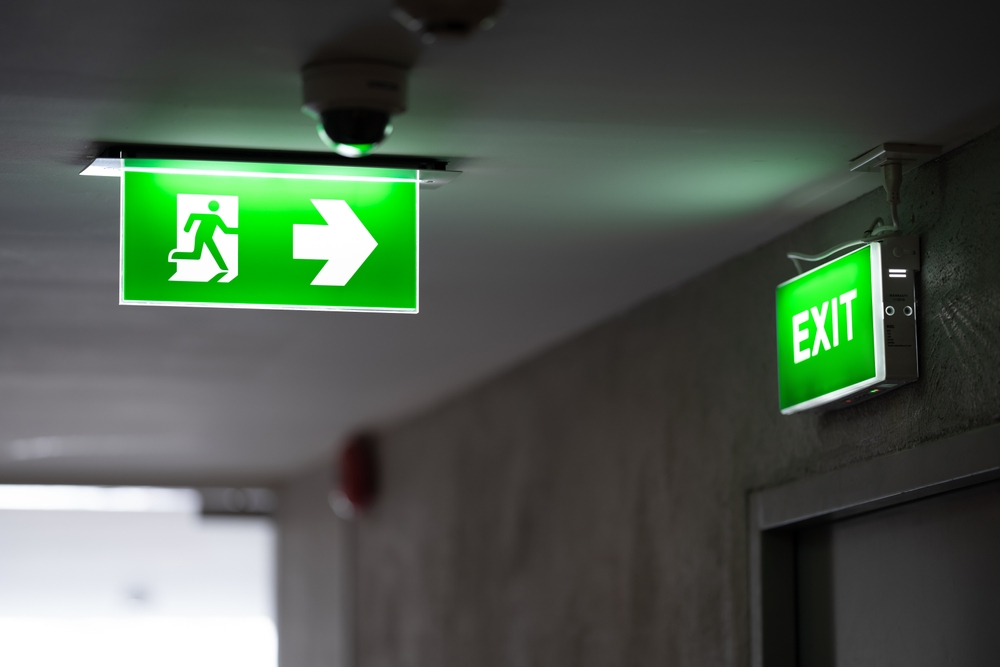Distance of emergency lighting installation to exits in Australia

In Australia, the installation of exit lights in proximity to exits is guided by the Australian Standard AS 2293.1:2018. According to this standard, exit lights should be strategically placed to ensure optimal visibility and guide building occupants to safety during emergencies.
AS 2293.1:2018 specifies that exit lights should be installed directly above or adjacent to each exit door to provide clear and unambiguous guidance. This placement ensures that occupants can easily identify the exit route and navigate toward safety in the event of an emergency.
The Australian standard emphasizes that exit lights must be positioned to provide uniform illumination along the escape route. This is critical for maintaining visibility, especially in areas with low ambient light, ensuring that individuals can safely traverse the path to exits without confusion or obstruction.
AS 2293.1-2018 outlines the placement requirements for exit signs, emphasizing that the space separating the sign from the exit should not surpass the designated viewing distance specified for that particular sign. To illustrate, if an exit sign features a pictogram measuring 150 mm x 150 mm, with a designated viewing distance of 30 meters, it implies that the sign must be positioned to ensure its visibility from any location within a 30-meter radius of the exit.
Furthermore, the standard stipulates that, aside from the mentioned criteria, the installation of exit signs must guarantee they remain unobstructed and free from any hindrance by objects like furniture or decorations. This precautionary measure is crucial to maintain the clear visibility and readability of the signs, particularly during emergency situations where swift comprehension is paramount.
According to AS 2293.1:2018, the proximity of exit lights to exits should take into account the specific layout and dimensions of the building. The goal is to minimize the distance an occupant must travel to locate an exit and enhance the overall effectiveness of the emergency evacuation system.
It is crucial to adhere to the guidelines set forth by AS 2293.1:2018 to meet the regulatory requirements for building safety in Australia. Compliance with these standards helps ensure that exit lights are strategically placed to fulfill their intended purpose during emergencies.
AS 2293.1:2018 also considers factors such as the height of installation to optimize visibility. The standard provides specific recommendations on mounting heights to guarantee that exit lights are visible across various areas within a building, contributing to a comprehensive and reliable emergency lighting system.
Building owners and facility managers must be aware of the requirements outlined in AS 2293.1:2018 to conduct proper installations and regular maintenance. Regular assessments and checks are essential to confirm that exit lights remain in compliance with the standards and are functional in case of an emergency.
While AS 2293.1:2018 provides comprehensive guidelines, it's essential to consider the unique characteristics of each building. Factors such as architectural features, occupancy load, and the presence of obstacles may influence the precise placement of exit lights to optimize their effectiveness in guiding occupants to safety.
Ultimately, the installation of exit lights close to exits in Australia is both a regulatory requirement and a fundamental aspect of building safety. Adhering to the guidelines set by AS 2293.1:2018 ensures that exit lights are strategically positioned to provide clear and reliable guidance, minimizing the time and effort required for occupants to reach safety.
For the most up-to-date and specific information on the installation of exit lights in Australia, it is recommended to refer directly to AS 2293.1:2018 and consult with local authorities responsible for building codes and safety regulations.
Disclaimer
This information is provided with the expectation that individuals will independently evaluate and validate all inforrmation with accredited experts. Exiting assumes no responsibility for any harm, losses, or damages resulting from the utilization or dependence on this information .